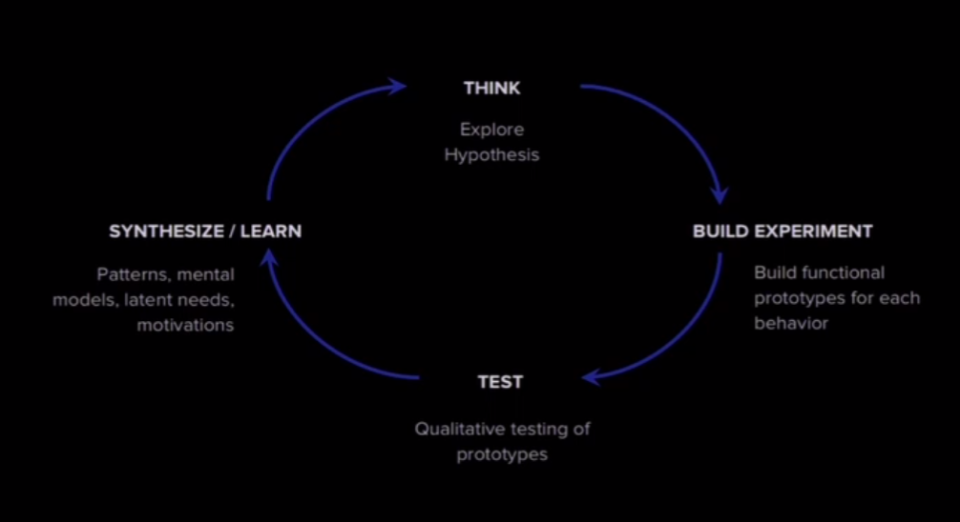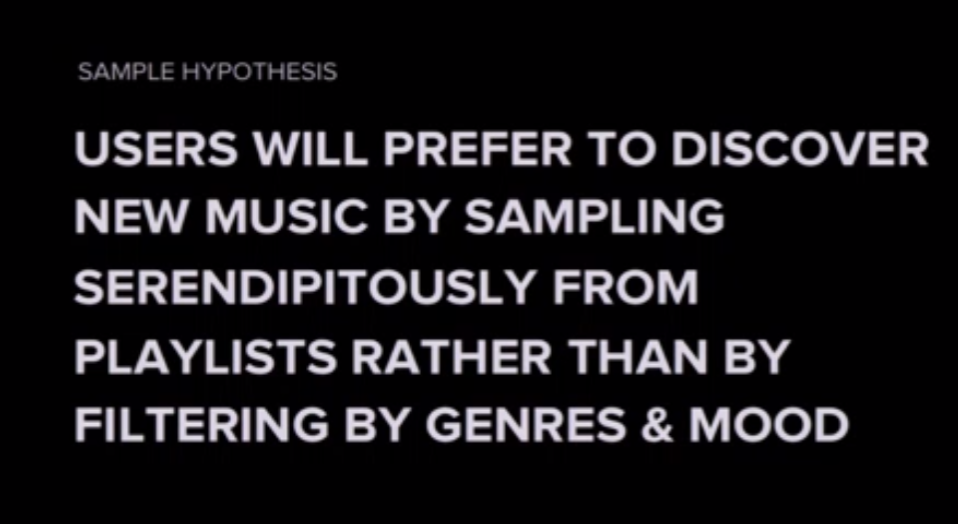Note: This is Part 1 of a series on using language to solve design problems.
“Innovation is no longer just about new technology per se. It is about new models of organisation. Design is no longer just about form anymore but is a method of thinking that can let you to see around corners. And the high tech breakthroughs that do count today are not about speed and performance but about collaboration, conversation and co-creation.” –Bruce Nussbaum
Design patterns can be copied. So can novel interactions. Even entire products – heck buildings, too – can be knocked-off and reproduced. A fast follower can improve upon its predecessor and avoid the mistakes of trailblazers. What happens then?
The above quote is interesting because it’s easy to assume that new technology has inherent value. It doesn’t. Technology has value when it continues to deliver meaningful experiences to people, helping them accomplish things they want in a manner and speed they desire.
Every company is “innovative” these days, but innovation is really about reorganization. Take Lyft or Uber. Each is transforming the taxi industry by rethinking the relationship between riders and drivers. Snapchat rethought how it organized time attached to a piece of user-generated content. And soon, we will witness more formless interfaces as sensor technology matures and becomes more accessible. Amazon Echo’s Alexa is only the beginning of voice interfaces that let people interact with Artificial Intelligence (AI) directly. We also have August Smart Lock, which Yves Behar described as “magical” because it unlocks a door for the right person as he/she approaches it.
As Bruce Nussbaum hinted in the quote, design today requires a new method of thinking that helps us organize abstract concepts into new models of value. Form can be easily copied, but lacking understanding of users and their context or picking the wrong concept to model is much more difficult to overcome.
What’s interesting to me is figuring out how to choose the right mental (conceptual) model, and how to do do this as a team. How do we develop a clear direction for design? As technology evolves to become more invisible and contextual, connecting the dots for your team – and ultimately, for your users – will become more critical.
Bridging digital and physical experiences at GoPro
A couple weeks ago, Ha Phan, a Lead UX Designer from GoPro, talked to us at the University of Washington about bridging digital and physical experiences. In our seminar, she described how her team leads blue-sky innovation. More importantly, she explained how they unite different teams like industrial design, camera software, and brand and marketing so they align around a common vision and design language to create a holistic user journey. Not only do they need to create a seamless and cohesive experience among their products, but also it was critical that they create cohesion among their various teams as well.

The process that the design team at GoPro uses to test behaviors. When you are building something completely new, you have no baseline for comparison so testing behaviors can help you uncover assumptions, trade offs, and pay offs you need to consider. (Slides from Ha Phan’s talk)
For one particular team, the camera mount team, their guiding principle was, “What’s the shot?” So every time they design a mount for a bike or motorcycle, for example, they think about where the mount is positioned so the user can look like a hero in the shot. Ha Phan says, “If you want design be as purposeful and focused, you have to ask the right questions. And that question becomes your core principle.”
Good questions fuel critical thinking and better product design. For GoPro, picking the right design direction starts with testing divergent behaviors – what they call qualitative A/B testing.

Sample hypothesis for Spotify. The 2 divergent behaviors to test are “sampling serendipitously” and “filtering.” (Slides from Ha Phan’s talk)
The crux of it is: What trade offs are users willing to make to get to good enough faster? When do they get to feeling satisfied?
Based on users’ behavior, you can start to see the motivations behind their decisions, and find your emphasis – the moments that really matter to users, the ones that designers need to get it right. Through synthesis, you can create focal points for your team by forming guiding principles that crystallize your decisions about the pay offs and trade offs.

From exploring design questions, forming a hypothesis, and solidifying guiding principles, we can progress through complexity and ambiguity to focused design. (Squiggle by Damien Newman)
What impressed me was how Ha Phan thought critically about the language that went into their guiding principles, using Instagram as an example. This is exactly where we can use language to solve design problems. When we carefully choose words that help us make decisions, we can dictate a clear direction for design.
Going back to Instagram, the design team likely had reasons why it kept Hyperlapse separate from the Instagram app. It might be because they wanted to keep the product quick, fun, and easy to use. To merge the functionalities of both apps would layer additional complexity and violate these guiding principles.
For August Smart Lock, Yves Behar, the lead designer, posed a question: What if instead of keeping people out, we let the right people in? Every decision he made from that point on focused on driving that moment of delight when someone walks towards the door and it automatically recognizes you and unlocks. For designers of August Smart Lock, their guiding principles could have been magical, discreet, and aware.
Julie Zhuo, Product Design Director at Facebook, explains the importance of guiding principles for decision-making:
“A great designer starts with the whys. She conveys the principles behind her thinking and leaves you feeling like you understand the core values from which all her design decisions flow.”
Being intentional about the words helps you get people on the same page about what’s important, which leads to clearer decisions and better design.
Designing our language to define our design
Words give our intentions form. They help us articulate our rationale for moving in a certain direction. As we saw in the GoPro design team, words give precision to how we frame a challenge, form a hypothesis, or define guiding principles. We make our way through the muck of complexity by verbalizing our ideas and distilling what we understand.
If we are successful, we gain a certain clarity of purpose – a thesis for the product. But we won’t arrive at clarity without paying attention to the way we craft our words.
Words help us:
- Empathize with what has happened, what is happening, and distill what they mean
- Manage conflicting views and evaluate priorities
- Clarify intent and direction
- Articulate our ideas and inspire action
Throughout the design process, language helps us collaborate, test our concepts, and rethink our assumptions about how something/someone works. In summary, I visualize the role of words in the design process as such:

Words helps us explore the problem space, form hypotheses, synthesize a design approach, and share the product narrative with other teams.
In the next article, I’ll share some tools I’ve discovered to help you design the language within your product as well as within your team. As you do, hopefully you’ll see that deciding on the language first frees your team to come up with more creative solutions while taking the right bets.
Writers can help you design better products
Amazon Echo is a game-changing product and no less a design feat. It’s also a harbinger for how design is evolving. Some trends I’m noticing: The screen/pixel is becoming less important. Designing “conversational interfaces” for AI bots could be a new frontier for UX. And Internet of Things (IoT) is here to stay, while we hide all complexity beneath the surface.
That is to say: We design for these in-between spaces.
We need to do a better job of helping people interact with words because words make up the spaces between us.
How do we help users move seamlessly from one context to another? How do we understand the nuances of a situation so it’s obvious to users what problem we are helping them solve?
The answer, I believe, is to create a shared language, perspective, and basis for making decisions among teams. We have to make our teams interoperable like APIs. When teams don’t share an understanding of the strategies and a language for discussing them, we end up with a Frankenstein of a product and experience. Just like on an interface, if we don’t use words intentionally, they become problems within our products – and within our teams.
